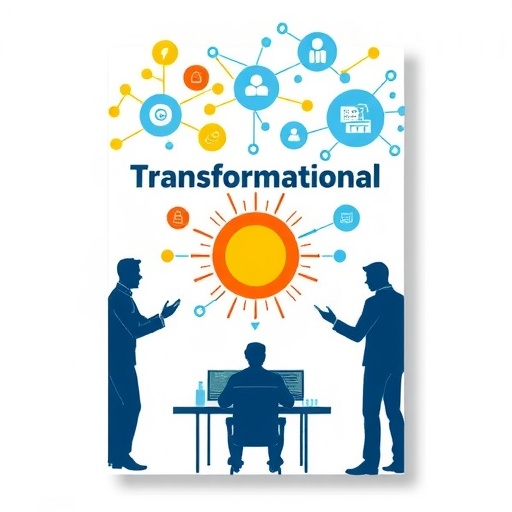In today’s rapidly evolving technological landscape, organizations face unprecedented challenges that require innovative solutions to foster successful transformations. A new book titled “Monster Transformation: Conquer Your Digital Fears, Be AI Ready, and Focus on What Matters to Your Organization” is set to shed light on these issues as it promises insights from a diverse team consisting of an academic, a business executive, and a visual storyteller. The book proposes a shift in focus toward empowering employees and honing their unique skills, which the authors believe is essential for overcoming the barriers to effective organizational change.
The authors—Ari Lightman, a professor at Carnegie Mellon’s Heinz College, Rafeh Masood, a business executive experienced in leading large-scale transformations, and Gary Hirsch, a renowned graphic artist—bring a wealth of knowledge to this topic. Their collaborative effort stems from extensive interviews and research into organizational behavior, change management, and psychology. The book articulates a pressing truth about the nature of transformation: simply implementing frameworks and playbooks often falls short when it comes to generating meaningful change within organizations.
Central to the authors’ argument is the concept of “monster slayers,” which refers to employees who possess distinct competencies that allow them to effectively tackle the challenges within their organizations. The book emphasizes the importance of activating these employees to systematically identify and eradicate barriers to transformation, which the authors metaphorically term “monsters.” These barriers are not just operational hurdles but systemic issues that can stifle innovation, agility, and overall organizational effectiveness if not addressed.
.adsslot_R0fxjv1qXG{ width:728px !important; height:90px !important; }
@media (max-width:1199px) { .adsslot_R0fxjv1qXG{ width:468px !important; height:60px !important; } }
@media (max-width:767px) { .adsslot_R0fxjv1qXG{ width:320px !important; height:50px !important; } }
ADVERTISEMENT
Lightman elaborates that the insights derived from their research highlight a painful yet common reality: organizations tend to overlook the unique potential of their existing workforce. By investing in the development and empowerment of employees, organizations can not only mitigate risks but also foster a culture of adaptability, resilience, and alignment. This paradigm shift is particularly vital as companies navigate the unpredictable landscapes influenced by artificial intelligence and digital transformation.
The book goes beyond abstract concepts by providing compelling case studies from notable brands such as Ferrari, Instacart, Patagonia, and Calm. These examples serve to illustrate tangible steps that organizations can take to identify transformation blockers and employ effective strategies to dismantle them. This narrative approach effectively contextualizes the authors’ theories within real-world scenarios, showcasing how transformative change can be achieved through practical application.
Moreover, the authors delve into the essence of transformative leadership itself, dissecting the skills and attitudes necessary for leaders to not only initiate change but also sustain it over time. Authentic leadership that emphasizes transparency and trust is crucial in rallying employees toward a unified vision. It is this kind of leadership that empowers individuals to embrace their “monster-slaying” capabilities, ultimately enhancing their contribution to organizational goals.
However, empowering employees is only one side of the equation. The authors stress that organizations must also cultivate an environment conducive to innovation and experimentation. This involves not only encouraging creative thinking but also creating safe spaces for employees to voice their ideas and concerns without fear of backlash. The intersection of creativity and innovation can lead to significant breakthroughs if harnessed effectively.
Importantly, Lightman and his co-authors also address the need for pragmatic planning in the face of rapid technological advancements. They assert that organizations must remain flexible and adaptable in their strategic approaches. This requires a careful balance between adhering to established protocols and embracing change, which can often lead to friction within an organization. The authors propose that transparent communication and inclusive decision-making practices can help bridge this gap.
To complement these insights, the book provides actionable takeaways that can be applied in any workplace. From exercises designed to facilitate team collaboration to frameworks for assessing organizational readiness for change, the content is tailored to meet the immediate needs of leaders in a time fraught with uncertainty. Each chapter equips readers with tools they can implement in their environments, fostering immediate improvements and setting the stage for long-term transformation.
In understanding how organizations can effectively navigate their digital journeys, “Monster Transformation” stands as a guide infused with real-world lessons and observations. The authors’ decades of combined experience will undoubtedly offer readers valuable perspectives, inspiring them to rethink the way they approach both organizational challenges and their workforce’s unique capabilities. By actively engaging employees and leveraging their strengths, organizations can not only overcome their “monsters” but emerge stronger and more innovative in the face of ongoing disruption.
As December approaches, anticipation builds for the release of “Monster Transformation,” a timely contribution to the ongoing discourse on digital transformation. With the foundational insight that employee engagement and competency activation are pivotal to success, the book is positioned to resonate with business leaders seeking to lead their organizations through the complexities of our modern world.
The insights presented in the book, combined with its engaging narrative style, promise to establish it as a seminal work in the field of organizational transformation. As businesses adapt to changing paradigms, the lessons within “Monster Transformation” will be invaluable for those aiming to successfully navigate digital disruption.
Subject of Research:
Article Title:
News Publication Date:
Web References:
References:
Image Credits:
Keywords
Tags: collaboration in business leadershipdigital transformation strategiesempowering employees in organizationsinnovative solutions for organizational challengesinsights from organizational behavior researchmonster slayers concept in organizationsorganizational transformationovercoming barriers to change managementpsychology of change in organizationsrole of AI in organizational changeunique skills for effective transformationvisual storytelling in business





